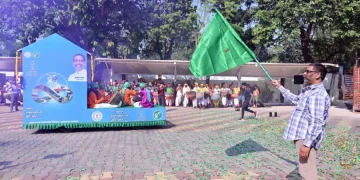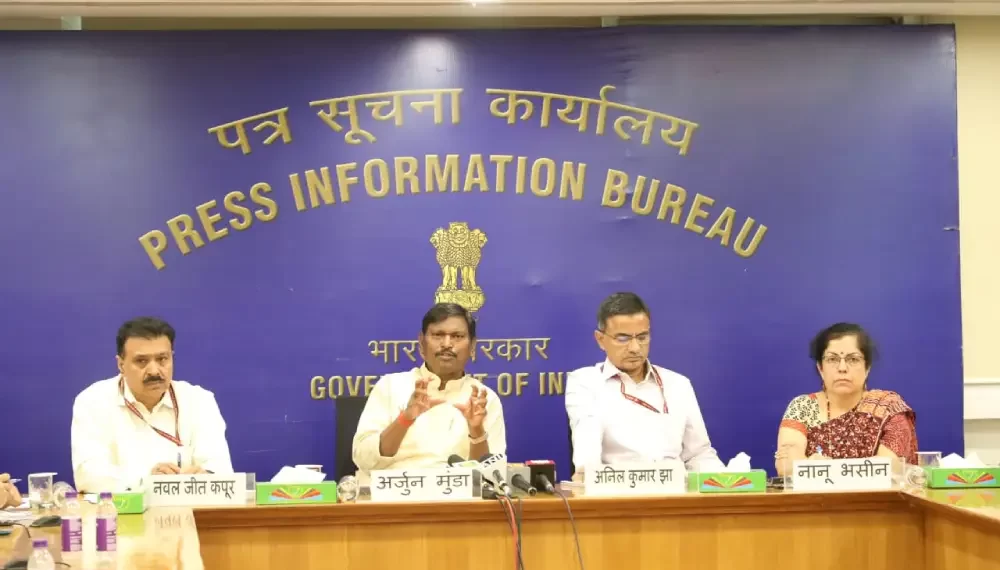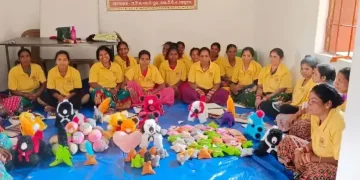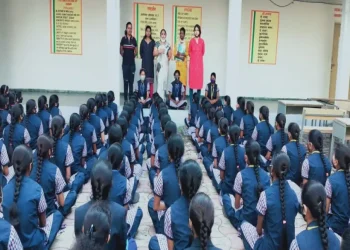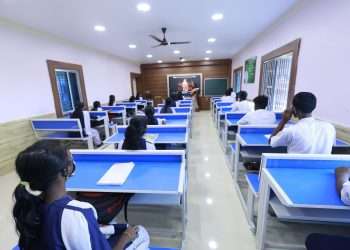New Delhi
Taking a cue from the United Nations Development Programme (UNDP)’s human development index (HDI), the Union Tribal Affairs Ministry is mulling to develop a similar index — National Tribal Development Index (NTDI) — to understand the condition of Particularly Vulnerable Tribal Groups (PVTGs).
“The index will concentrate on the PVTGs population, which is estimated to be around 28 lakh. The aim is to understand how government schemes have benefited the PVTGs to uplift their lifestyles and livelihood. The research work will also look into the areas where improvement is required,” Arjun Munda, Union Tribal Affairs Minister, told reporters on Wednesday while sharing various initiatives undertaken by his government for the welfare of the tribal people in the country in the last nine years under Prime Minister Narendra Modi.
He said the government in the last 9 years has focused on improving the socio-economic conditions of the PVTGs, providing quality education and affordable health facilities to the sector. The benefits of various schemes of line Ministries have not adequately covered PVTG communities as they live in dispersed habitations in remote forests and mountains.
Munda said under the PVTGs Mission, 15,000 crore rupees will be spent in three years, focusing on improving basic facilities in the far-flung villages such as clean drinking water, sanitation, improved access to education, health, road and telecom connectivity, and sustainable livelihood opportunities. He said, there are one lakh 12 thousand tribal-dominated villages in the country and the government has set a target to develop 36,000 villages as a model village.
The Minister also recalled that for the first time since India’s independence 28 members each from 75 PVTGs communities visited Rashtrapati Bhavan and met President Droupadi Murmu. He also pointed out that 1 nodal Officer has been appointed for each PVTG community and they are visiting their habitations to understand their requirements.
Similarly, under Eklavya Model Residential Schools, in the next three years, 38,800 teachers and support staff will be recruited centrally for the 740 EMRS, serving 3.5 lakh tribal students. So far an amount of Rs. 28,919.72 crore has been allocated under the scheme. In 2013-14, 167 schools were sanctioned, which will increase to 693 in 2022-23. Similarly, in 2013-14, 119 schools were functional, while in 2022-23, 401 schools are functional as on date.
The Ministry implements 5 scholarship schemes under which an amount of more than Rs. 15,000 crore has been disbursed in the last 9 years and on an average 30 lakh students benefit from these schemes every year.
“At least, 5000 of students have taken benefit of Fellowship scheme for doing MPhil and PhD and -75 of students have taken admission in various foreign Universities for doing higher education and about 6000 students taken admission in top class Institutes like IIT, AIIMS, IIM under the Central Sector Scheme run by the Ministry,” he said.
Setting up Sickle Cell Anemia Elimination Mission has been another significant achievement of the Modi Government, he said, adding that it will entail awareness creation, universal screening of 7 crore people in the age group of 0-40 years in affected tribal areas, and counselling through collaborative efforts of central ministries and state governments.
Munda also talked about Pradhan Mantri Adi Adarsh GramYojna that aims at integrated development of 36,428 villages with more than 500 tribal population and 50% or more ST persons.
“These villages are located in 458 districts, 2361 blocks and 24775 Gram Panchayats covering 332 parliamentary constituencies and 1.02 cr households and ST population of 4.2 cr. Convergence has been planned with 58 schemes of Central Government having Schedule Tribe Component & State Government Schemes to bridge various gaps. An amount of Rs. 7400 cr has been earmarked under the program for 5 years and about 2000 cr released already to states,” he added.
MoTA’s 9-Year Performance
- In 2023-24, a budget of Rs 12461.88 cr allocated to MoTA, which is 3 times compared to the budget in 2013-14 of Rs 4295.94 cr
- 5-time increase in Scheduled Tribe Component Funds —. from Rs. 24,598 cr in 2013-14 to Rs 1,19,509 cr in 2023-24
- Over Rs 25,000 cr released to States for more than 5000 projects under different schemes
- Over Rs 15,000 cr disbursed in last 9 years, 30 lakh students benefit every year
- 5000 students took Fellowship scheme for doing MPhil and PhD, 75 took admission in foreign Universities, and 6000 students in IIT, AIIMS, IIM
- Rs 900 cr released to about 200 NGOs for about 250 projects for tribal education, livelihood and health
- Sanctioned funds for construction of building of 10 new TRIs
- Sanctioned 10 Museums for Tribal Freedom Fighters since 2017-18
- 15th November declared as “Janjatiya Gaurav Divas” on the Birth Anniversary of Birsa Munda in 2021. More than 200 events have been organised
- Pradhan Mantri Adi Adarsh Gram Yojna, aimed at integrated development of 36,428 villages, including 4242 villages in northeast, with more than 500 tribal population and 50% or more ST persons
- Rs 1612 cr approved under Pradhan Mantri Janjatiya Vikas Mission
- Rs 89.14 cr released to States for creation of infrastructure under which 1316 haat bazaars, 603 small storage units and 22 processing units were sanctioned
- TRIFED started organizing ‘Aadi Mahotsav’ – Festival of Craft, Culture, Cuisine and Commerce in all major cities across the country in 2017-18
- TRIFED organized 37 Aadi Mahotsavs resulting in direct benefit to 7700+ Tribal artisans and realised sales of more than Rs. 38 cr
- Since 2014-15, TRIFED organized/participated in more than 1800 exhibitions across India
- An amount of Rs. 239.11 crores were realised on sales of tribal products through offline and online platforms including that of Aadi Mahotsavs
- Under Forest Rights Act 2006, a total of 21.99 lakh Individual titles and 1.08 lakh Community titles distributed
- 73 new Tribes India Outlets opened, sold tribal products worth of Rs. 182.03 cr







